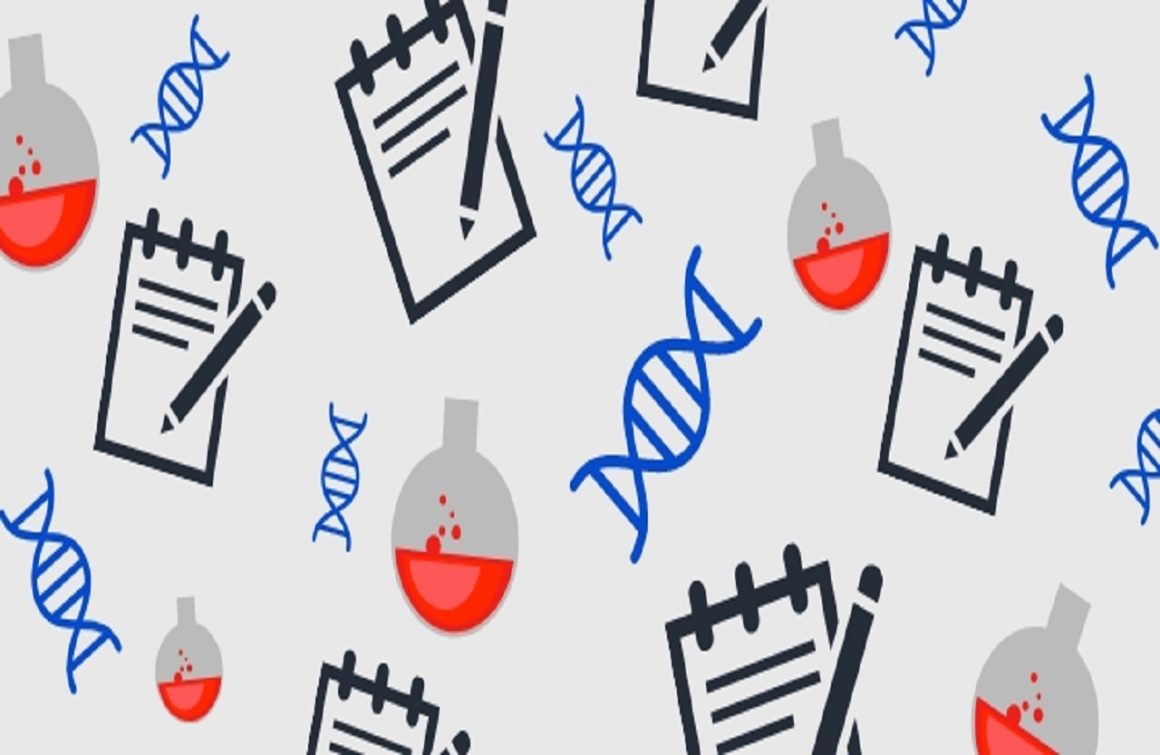#ScienceSaturday posts share relevant and exciting scientific news with the KAND community. This project is a collaboration between KIF1A.ORG’s Research Engagement Team Leader Alejandro Doval, President Kathryn Atchley, Science Communication Associate Aileen Lam and Chief Science Officer Dr. Dominique Lessard. Send news suggestions to our team at impact@kif1a.org.
Recent KIF1A-Related Research
2021 KAND FAMILY & SCIENTIFIC ENGAGEMENT CONFERENCE

We’re so close to the 2021 KAND Family & Scientific Engagement Conference, which will take place on Friday, July 9th and Saturday, July 10th. For more information and to register for this event, click on the button below!
DYNAMIC NANOASSEMBLIES FOR IMAGING AND THERAPY OF NEUROLOGICAL DISORDERS
In the past years, there has been an increase in reports of people being affected by neurological disorders (NDs) that range from Alzheimer’s and Parkinson’s disease to rare NDs that we’re continuing to learn more about to this day. To enhance diagnostic capabilities and therapeutic approaches for NDs, the emerging field of nanomedicine is on the rise, as researchers are taking this path to arrive at potential treatments. This area of nanomedicine is composed of imaging and/or therapeutic agents that have been identified to diagnose or treat NDs with great efficacy. Additionally, scientists have determined that dynamic nanoassemblies, which are self-assembling particles that function to interfere with the pathogenic pathways or substances leading to NDs, are at the forefront in diagnosing and treating NDs.
In this review, the authors highlight the pathogenic mechanisms of different NDs and introduce how nanoparticles, the building blocks of dynamic nanoassemblies, can function to potentially provide efficient diagnoses or therapeutic relief. The authors also discuss the benefits of using this newer technology such as its ability to cross the blood brain barrier, promote neuroregeneration, and accurately provide diagnosis and treatment. Additionally, the authors also speak to the challenges that are encountered such as safety risks and developing accurate delivery systems. Nonetheless, this cutting-edge science shows promise for the future of NDs in both diagnosis and therapeutic aspects. This advancement is incredibly exciting, especially for the rare disease community as many rare diseases like KAND struggle with obtaining a timely diagnosis and finding treatments for the patients affected. Want to learn more about the tremendous potential of dynamic assemblies and nanoparticles? Check out the review linked below! READ THE PAPER
Rare Disease News
MINI-BRAINS REVEAL CAUSE OF RARE SYNDROMES
With many rare disorders not well understood, researchers are on a mission to determine the underlying causes of these diseases in hopes of finding potential treatments and to provide more insight for the patients and families affected. From what scientists and clinicians have gathered, a handful of rare neurological disorders (Juberg-Marsidi, Say-Meyer, Brooks syndrome) that lead to intellectual disability in children are linked to defects in a gene known as HUWE1, which is responsible for encoding an enzyme that tags proteins for disposal. As a result of mutations within this gene, children experience distinctive facial features and difficulty with walking and speaking.
In efforts to gain a better understanding, Professor Barbara van Loon uncovered a common cause for these different rare syndromes. She collected blood cells from five boys with these rare syndromes to recreate the development of these diseases in the form of “mini-brains” derived from stem cells. In doing so, she was able to determine an important new piece of information about this cohort. Interestingly, van Loon revealed that on top of sharing a defect in the HUWE1 gene, these syndromes also shared defects in a protein called p53, which plays a major role in basic neurological mechanisms. Although p53 is commonly known for its involvement in cancer, this is the first time research has shown that dysregulation of this protein can lead to problems with the brain’s development and eventually intellectual disabilities. This article highlights the importance of this finding because by determining how rare diseases are related, scientists can look to address multiple disorders at once, which can lead to more rapid developments of future therapies. To learn more about this discovery and the mini-brains described above, check out the article and video below! READ THE ARTICLE
CRISPR-CAS9 IN VIVO GENE EDITING FOR TRANSTHYRETIN AMYLOIDOSIS
Gene editing has been a hot topic lately, as many scientists are working to refine this process for potential disease therapeutics. Recently, a new study was published regarding the usage of CRISPR-Cas9 gene editing for a rare heart disease called Transthyretin (TTR) Amyloidosis, also known as ATTR amyloidosis. This life-threatening disease occurs from a progressive build-up of misfolded TTR protein in tissues surrounding the heart and nerves. The accumulation of the TTR protein then makes it harder for the heart to pump blood out to the rest of the body, which then ultimately leads to heart failure. Current forms of therapeutic strategies are aimed at reducing TTR build-up by inhibiting TTR protein synthesis or by stabilizing the protein to prevent it from misfolding and clumping. However, these forms of therapies are limited due to the requirement of long-term administration and can also lead to adverse side effects.
As a way to address these hurdles, researchers have identified a gene editing tool via the CRISPR/Cas9 system to reduce TTR levels in patients with ATTR amyloidosis. This new form of gene editing is known as NTLA-2001 and is aimed at editing the TTR gene in liver cells, which is where the protein is made, to reduce TTR protein in the body. The study was conducted on six patients with ATTR amyloidosis and a significant reduction of TTR was seen in these patients just after 28 days! With these exciting results showing the impact of gene editing based therapies in potentially developing lifelong treatments for rare diseases, scientists are looking to expand these tools for other diseases as well. To read and learn more about this incredible breakthrough discovery and ATTR amyloidosis, check out the paper and video linked below! READ THE ARTICLE https://www.youtube.com/embed/lXZsWTUjV7Q?feature=oembed
KIF1A.ORG exists to accelerate discovery of treatments for this generation of people affected by KIF1A Associated Neurological Disorder (KAND). In addition to ongoing R&D collaborations, KIF1A.ORG funds strategic projects powered to rapidly develop treatment for KAND.
CHUNG LAB

Wendy Chung, MD, PhD, and her team at Columbia University Medical Center in New York City have been our relentless partners since the founding of KIF1A.ORG in 2017. Chung Lab spearheads a robust preclinical KAND program, including a global patient registry and longitudinal natural history study; disease modeling with patient-derived stem cell lines (iPSCs) and animal models; biomarker studies; KAND severity scale and clinical disease characterization. Dr. Chung has been our sherpa from day one, and sees many of our KAND families in her clinic. The Chung Lab’s work has drastically improved our understanding of KIF1A gene function, clinical care, and targeted strategies to develop treatments and cures for KAND. Dr. Chung also leads several collaborations within the scientific community focused on bringing treatment to families affected by mutations in KIF1A. If you’re a patient or caregiver, visit our Natural History Study page to learn how you can get involved to advance KAND research further.
Recent Research
- Genotype and defects in microtubule-based motility correlate with clinical severity in KIF1A Associated Neurological Disorder (2020)
- Disease severity in KIF1A Associated Neurological Disorders (KAND) is correlated with variant location (2019)
CHRISTODOULOU LAB

The Kinesin family member 1A gene (KIF1A) encodes for the motor transporter protein KIF1A, which is specifically expressed in neurons, and is involved in the fast delivery of its specific cargo to the tips of neurons. KIF1A plays a crucial role in the maintenance and proper functioning of mature neurons, supporting healthy brain function. Defective trafficking caused by dysfunctional KIF1A results in a “traffic jams” in neurons, triggering a devastating spectrum of progressive brain disorders, together known as KIF1A-Associated Neurological Disorders (KAND). Currently, there is no cure for KAND and existing treatments are nonspecific and incomplete, resulting in a huge burden on affected families. In this project, we aim to address this unmet therapeutic need by identifying existing FDA-approved drugs that could be ‘repurposed’ to improve KIF1A molecular function, and subsequently improve the neurological problems that children with abnormalities of KIF1A have to endure. To the best of our knowledge, this is the first small-molecule based drug screening study focused on KIF1A to explore targeted therapeutic options in KAND, which we expect will have a significant impact on the lives of individuals with this devastating neurological disorder.
Recent Research
- Expansion of the phenotypic spectrum of de novo missense variants in kinesin family member 1A (KIF1A) (2020)
RAREBASE

KIF1A.ORG is partnering with Rarebase to explore a potential therapeutic avenue for KAND. Rarebase is a public benefit corporation pioneering a new approach to biotech. They run multiple therapeutic discovery pipelines in partnership with patient organizations to identify new therapeutic options with the highest probability of success. The founders of Rarebase set out to create “a company that cares about exactly the same thing as the patient community: a tangible treatment as fast and reliably as possible, not contingent on its novelty or ability to be commercialized.” Our project with Rarebase aims to develop an antisense oligonucleotide (ASO) to reduce pathological axonal degeneration. As this form of degeneration is seen in many neurological disorders, such as KAND and hereditary spastic paraplegia, this approach can be applied to a broader spectrum of diseases that are characterized by neurodegeneration. The initial scope of work for this project began in March 2021, and includes iPSC differentiation, identification of markers for neurodegeneration, and ASO testing in KIF1A motor neurons.
MCKENNEY LAB

The McKenney lab at University of California, Davis uses state-of-the-art biochemical and biophysical methods to uncover the molecular basis of defects in KIF1A motor proteins containing mutations known to cause KAND. We have focused our initial efforts on the P305L mutation, as this mutation was previously uncharacterized and little was known about how this mutation impacts the KIF1A motor. We are producing normal and mutant KIF1A motor proteins and assaying their ability to move along microtubules using single-molecule microscopy that allows us to visualize individual KIF1A motor molecules and their movement characteristics. Our work with P305L has uncovered novel defects in KIF1A motility, providing new insights into disease-causing mutations that will inform therapeutic efforts. Additionally, the work has uncovered a novel mechanism of disease, which we find is conserved in other classes of kinesin motors that are also mutated in hereditary spastic paraplegia (HSP). Thus, our work on KIF1A is providing novel insights into other causes of understudied human diseases. In addition, we are expanding our efforts to characterize other known KIF1A mutations. Our platform for single molecule investigation will allow us to provide a more complete understanding of how each human mutation affects the KIF1A motor’s ability to move along microtubules, thus helping to tailor specific treatments for individual patients.
Recent Research
- A Highly Conserved 310-Helix Within the Kinesin Motor Domain is Critical for Kinesin Function and Human Health (2020)
- Disease-associated mutations hyperactivate KIF1A motility and anterograde axonal transport of synaptic vesicle precursors (2019)
GENNERICH LAB

Arne Gennerich, Ph.D., is an active member of the KIF1A Research Network and an expert in molecular mechanisms of microtubule-based motor proteins in health and disease. With support from KIF1A.ORG, the Gennerich Lab is working with Atomwise to use their AI drug discovery platform to search for small-molecule drug candidates for KIF1A-Associated Neurological Disorder (KAND). Dr. Gennerich is also collaborating with Hernando Sosa, Ph.D., a colleague at Albert Einstein College of Medicine, who is known for his cryo-electron microscopy (cryo-EM) work to capture high-resolution structures of microtubule-associated proteins. Their cryo-EM project on KIF1A will enable us to drastically improve our understanding of the shape (or structure) of the KIF1A protein, which is critical for efficient therapeutic development for KAND.
Recent Research
- Pathogenic mutations in the kinesin-3 motor KIF1A diminish force generation and movement through allosteric mechanisms (2021)
BARINKA LAB

Cyril Barinka is a Principal Investigator at Institute of Biotechnology of the Czech Academy of Sciences, Vestec, Czech Rep, and a scientific collaborator with HNF Pharma Inc. He is a leading expert in the biochemistry and structure-function of the histone deacetylase (HDAC) enzyme gene family. Specifically, inhibitors of the HDAC6 isoform are hypothesized to represent an effective drug therapy for KIF1A Associated Neurological Disorder (KAND). This hypothesis is strongly supported by basic biology and preclinical effectiveness demonstrated for HDAC6 inhibition in Charcot-Marie-Tooth (CMT) by HNF Pharma Inc and other researchers. CMT is a hereditary peripheral nervous system (PNS) neuropathy that appears to be closely relatable to KIF1A which affects the central nervous system (CNS). HNF Pharma Inc is developing HDAC6 drugs for CMT and also supporting the work conducted by The Jackson Laboratory to prove this therapeutic mechanism of action by providing the novel brain penetrant HDAC6 inhibitor WT36-87 for testing in the KIF1A leg-dragger mouse model. Cyril is providing expertise and assay technology critical to assessing the effectiveness of WT36-87 and advancing HDAC6 drug therapies to KIF1A and CMT patients.
Recent Research
- The disordered N-terminus of HDAC6 is a microtubule-binding domain critical for efficient tubulin deacetylation (2020)
ALBANY MOLECULAR RESEARCH INC. (AMRI)

In 2020, KIF1A.ORG was awarded a Rising Tides grant from The Child Neurology Foundation to support organizations during the COVID-19 pandemic. This grant enabled KIF1A.ORG to partner with Albany Molecular Research Inc. (AMRI) to diversify our research strategy. AMRI is a distinguished contract research organization (CRO) with multiple locations and a range of services that support therapeutic development. Our first project with AMRI is an in silico docking study to support KIF1A.ORG’s drug repurposing therapeutic development strategy. Through this project, AMRI will model the KIF1A crystal structure to understand the location and possible effects of known gain-of-function and loss-of-function mutations, and explore existing kinesin binding compounds. These efforts will provide insight into assay design and strategies to pursue additional mutations.
KIF1A.ORG MINI GRANTSLaunched in 2021, these mini grants are designed to aid researchers with KIF1A-focused research projects that help advance KIF1A.ORG’s mission of accelerating research to find a cure for KAND. With these mini grants, we aim to do our part to help remove roadblocks in KIF1A research by supporting smaller direct project expenses.ADVANCE RESEARCHOur organization supports researchers who engage in collaborative and translational work to rapidly discover treatment for this generation of people affected by KAND. If your research can impact KAND families, contact us at impact@kif1a.org.SUPPORT OUR MISSIONWe’ve made remarkable progress toward our mission of bringing treatment to this generation of KAND patients thanks to donors like you. But we’ve got more work to do. Help KIF1A.ORG accelerate our urgent mission.DONATE
[/cmsmasters_text][/cmsmasters_column][/cmsmasters_row]


